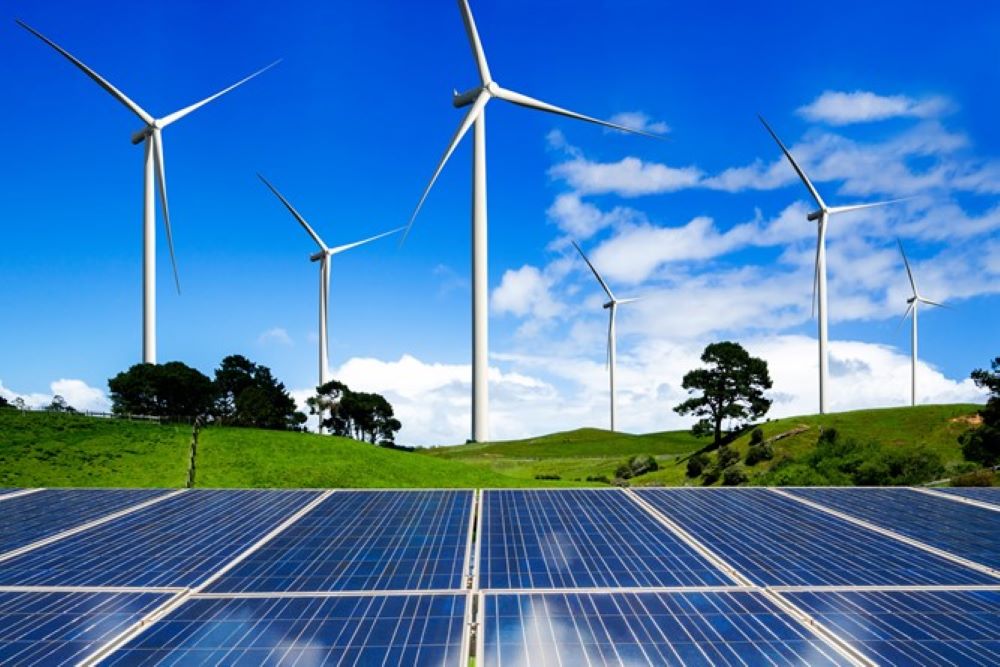Q&A with Dr. Leanne Chen

Dr. Leanne Chen discusses the connections between her research in electrochemistry and sustainable energy.
We spoke to chemistry professor Dr. Leanne Chen, who was recently awarded $200,000 under the New Frontiers in Research Fund. Chen described her research applying computational simulations to chemical mechanisms, and her focus on electrochemistry, a branch of chemistry that explores the relationship between electricity and chemical reactions.
When did you join the Department of Chemistry at the University of Guelph?
I joined U of G in March of 2020. Starting to build a research program with the ongoing pandemic has challenging aspects, however, my colleagues both in the Department and CEPS have been more than helpful and welcoming through sharing teaching materials, initiating research collaborations, and providing mentorship about navigating life as an early career researcher. My first year would not have been nearly as productive and rewarding without such a supportive environment.
Can you tell us about your research?
My efforts are focused on developing a new explicit solvent model—a computational model that calculates electrochemical reaction pathways.
In a chemical reaction, a chemical substance (called a “species”) changes from the initial reactant to the final product. In the phase where the reacting species is no longer the starting material, but not yet the final product, it is called an “intermediate.” Intermediate species provide insight into the chemical reaction but can be difficult to detect because they are only present a short time or are too dilute. That is where computation simulations can help.
In electrochemistry, without a rigorous set of experimental data on reaction intermediates, the challenge is to design computational simulations to understand the observables that are known—such as product distribution or formation rates, which are single outputs resulting from many input variables.
Hence, computational simulations need to be accurate both in terms of the electronic interactions, and the model itself needs to be a faithful representation of reality.
My ultimate goal is to be able to make quantitative predictions about electrocatalysts (substances that enable an electrochemical reaction) performance and establish a reliable means to improve electrocatalyst stability, activity, and selectivity.
Can you define “ab initio” computational methods and what applications do they have within your research?
“Ab initio” is Latin for “from the beginning,” and in a chemistry context, refers to quantum chemistry methods. More generally, it means that a model is based on the fundamental laws of nature and does not have any artificial parameters.
It is important that my calculations are “ab initio” because they need to be accurate enough to provide useful insight into the behaviour of chemical reactions. Within my field there is some debate about whether “ab initio” can refer to density functional theory (which is formally exact but an approximation in practice) or only wavefunction-based methods, however, to explain it fully requires too much jargon and I will just stop here.
Can you tell us more about electrocatalysts? What are they and why are they important for sustainable energy?
An electrocatalyst can use electricity as the energy requirement to drive chemical reactions (the “electro” part) and at the same time lowers said energy requirement for these reactions compared to if they happened on their own (the “catalyst” part). When chemists want to add more energy to a reaction, the more conventional way is through thermal energy—just heat it up, which can be inefficient.
Electrocatalysts are interesting for sustainable energy because we have emerging technology and infrastructure for generating electricity through renewable means, such as solar panels and wind turbines (and traditionally through hydroelectric facilities), which means that we can drive any chemical reaction sustainably if we have a good electrocatalyst. We can also target reactions that are especially relevant to protecting the environment, such as electrochemically converting waste chemicals in the ecosystem to alleviate the harmful effects of these chemicals on human and animal life.
Your work is unique because it connects atomic-scale research with big-picture impacts (e.g. for renewable energy)? Why is it so important to consider research from multiple scales?
My PhD advisor Prof. Jens Nørskov refers to Pasteur’s quadrant for these types of research problems: “use-inspired basic research.” Basic research is essential to furthering our understanding of the universe. On the other hand, focusing on practical challenges generally has more immediate and tangible benefits. Thus, by combining fundamental understanding with specific applications in mind, I believe there is potential to make an important impact on society.
What is a recent research project/initiative that you are especially excited about?
I am very excited about my ongoing collaboration with Dr. Anna Klinkova, assistant professor of Chemistry, at the University of Waterloo. We are developing new electrocatalysts for renewable fertilizer production, which also has the benefit of removing and upcycling nitrogenous waste from the environment.
A non-research initiative that I have recently resumed—after a fifteen-year hiatus—is my study of piano. I find it fulfilling to be able to play a difficult piece after putting in due effort. It is also a great way to recharge my brain after thinking for a long time.
Are you currently looking for undergraduate, graduate, or postdoctoral students?
Definitely! I am looking for both undergraduate and graduate students who are interested in learning about theoretical/computational chemistry and want to contribute to solving scientific problems for a more sustainable future.

Chen’s research focuses on electrochemistry and has important applications for emerging technologies in renewable energy, such as improved solar panels and wind turbines.